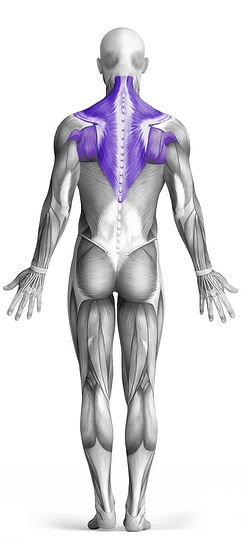Lever Bent Over Row 101 Video Tutorial
0

Exercise Synopsis
Target Muscle Group
Upper Back
Secondary Targets
Execution
Compound
Force Type
Pull
Required Equipment
Barbell
Fitness Level
Advanced
Variations
None
Alternatives
Timer
Hour
Minute
Second
Stopwatch
00:00:00:00
Overview
The Lever Bent Over Row is a compound exercise that primarily targets the upper back muscles, with secondary emphasis on the lats. Using a barbell as the required equipment, this exercise involves pulling the weight towards your torso while maintaining a bent-over position. The movement engages multiple muscle groups, including the biceps and forearms, in addition to the upper back and lats. It's a great exercise for building strength and mass in the upper body, especially for improving posture and developing the back muscles. The Lever Bent Over Row falls into the "Pull" category due to the pulling motion involved.
How to Perform
Start by slightly bending your knees and hinging forward at the hips, lowering your torso until it is almost parallel to the ground. Keep your back straight throughout the movement to avoid strain.
With your torso held steady, grasp the barbell and pull it towards your torso, ensuring that your elbows stay close to your sides. This position helps to activate the upper back muscles rather than relying on your arms.
At the peak of the lift, pause briefly, engaging your back muscles by squeezing them tightly before you begin lowering the barbell.
Slowly return the barbell to the starting position, maintaining control over the weight as you descend to prevent jerking movements.
Repeat the motion for the desired number of reps, always prioritizing proper form to maximize effectiveness and minimize the risk of injury.
★ Bonus: For exercises that involve external weights (such as dumbbells, barbells, or machines), the One Rep Max (1RM) calculator can help you estimate your maximum lifting capacity. Use it to track your strength progress and adjust your training for optimal results.
Tips
Maintain Control: Perform the exercise with deliberate and controlled movements. Instead of jerking or rushing, focus on pulling the barbell towards your chest with your elbows close to your body, then lower it slowly. This approach keeps your muscles under tension longer, helping you achieve better results.
Pace Yourself: Avoid speeding through the exercise, as doing so can compromise your form and increase the risk of injury. Focus on the quality of each rep, ensuring you're executing the movement correctly and with precision.
Use Appropriate Weight: Be mindful not to overload the barbell. Using too much weight can strain your muscles and negatively affect your form. Select a weight that challenges you without sacrificing proper technique.
How Not to Perform
Avoid Using Momentum: Do not rely on momentum to lift the barbell. Swinging or jerking your body to move the weight takes the focus off the target muscles and can lead to unnecessary strain. Focus on controlled, smooth movements to engage the upper back and lats effectively.
Don’t Allow Elbows to Flare Out: Keep your elbows close to your body throughout the movement. Letting them flare out shifts the emphasis away from the upper back and can strain the shoulders. Keep them tucked in to maximize back muscle activation.
Don’t Round Your Back: Ensure your back stays straight during the exercise. Rounding the back, especially in the bent-over position, can cause unnecessary pressure on the spine and increase the risk of injury. Keep your core engaged and your spine neutral.
Don’t Overextend at the Top: Avoid pulling the barbell too high. Overextending can put undue stress on your shoulders and reduce the effectiveness of the movement. Stop when the barbell is near the chest, keeping the movement controlled and focusing on back muscle engagement.
Avoid Using Too Much Weight: Using too much weight can force you to use improper technique or cheat during the movement. Choose a weight that allows you to maintain form throughout the set, ensuring you're targeting the right muscles without risking injury.
Don’t Rush the Reps: Avoid performing the exercise too quickly. This reduces the time your muscles are under tension and can lead to poor form. Take your time with each rep, focusing on the movement and fully engaging the target muscles.
Don’t Arch Your Neck: Avoid straining your neck by looking up or forward excessively. Keep your head in a neutral position, aligned with your spine, to avoid neck tension or discomfort. Focus on the back muscles, not the neck, to ensure proper technique.
Variations
Variations of fitness exercises refer to different ways of performing a specific exercise or movement to target various muscle groups, intensities, or goals. These variations aim to challenge the body differently, prevent plateaus, and cater to individuals with varying fitness levels.
Alternatives
Alternative exercises in fitness refer to different movements or activities that target similar muscle groups or serve the same training purpose as the primary exercise. These alternative exercises can be used as substitutes when the original exercise is unavailable or challenging to perform due to various reasons such as equipment limitations, injuries, or personal preferences.








